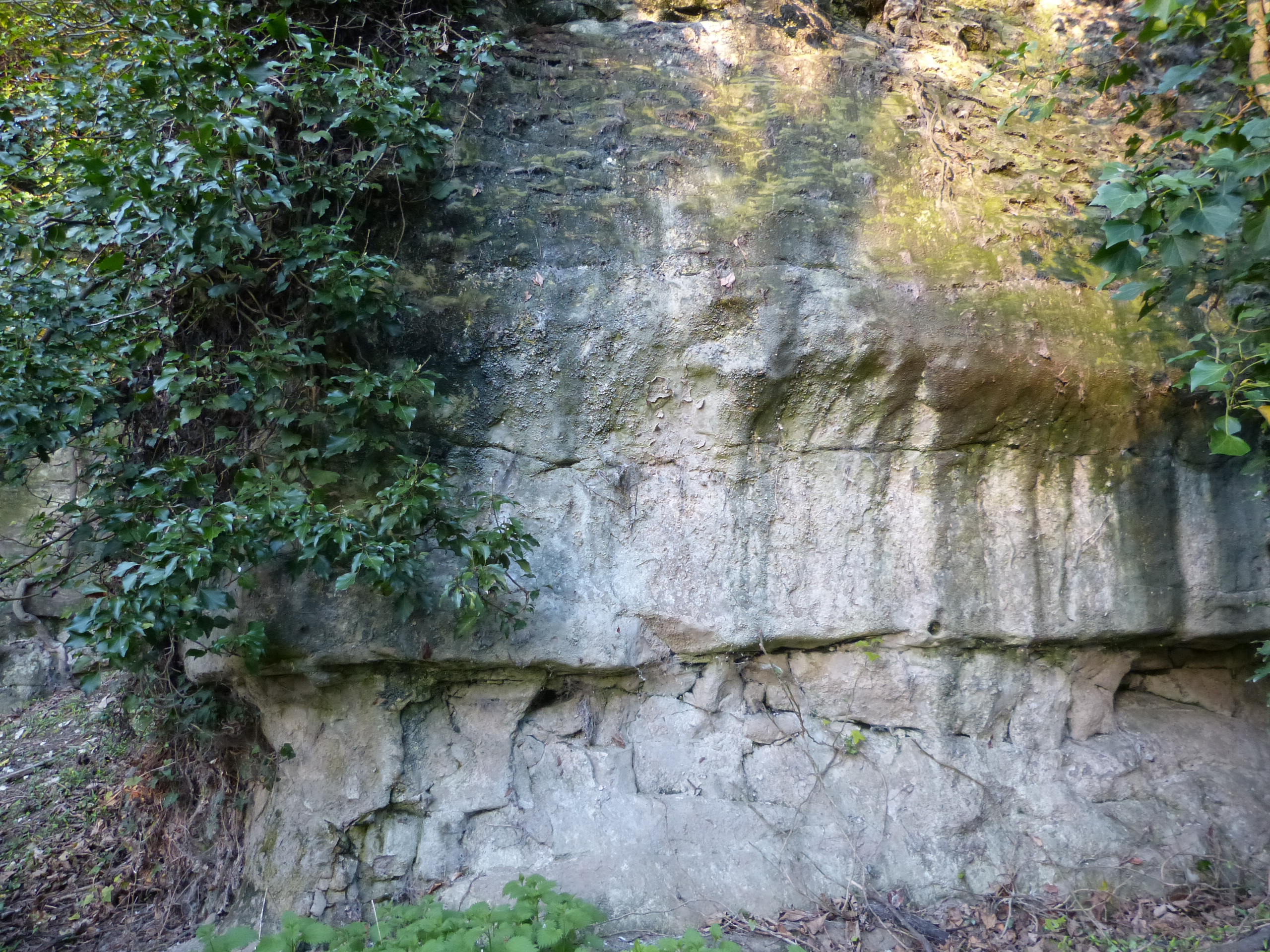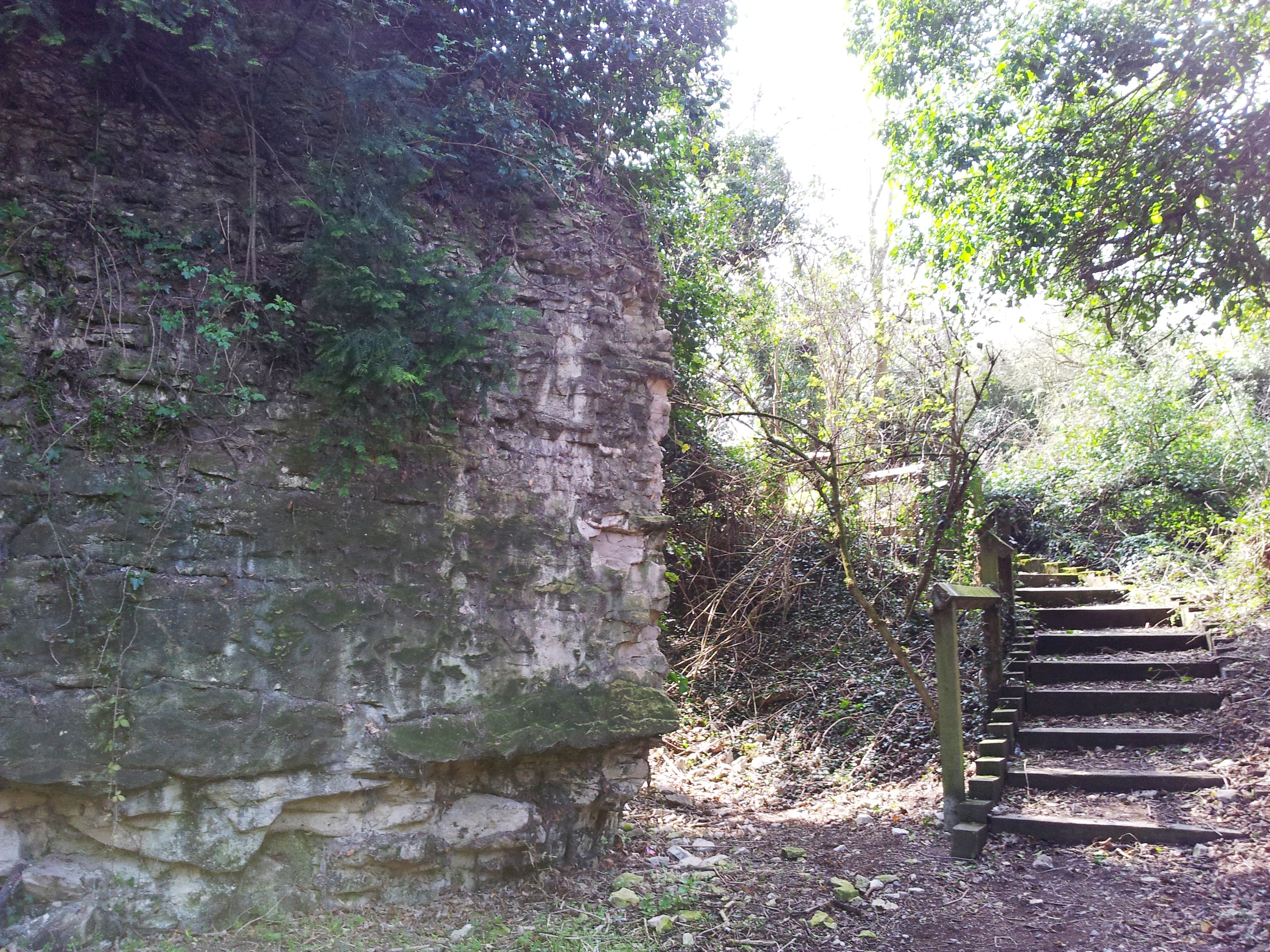

Castle Spring, Burwell LGS and Carter’s Pit, Burwell LGS
These two sites, 400m apart in Burwell, are linked by the presence of the Cretaceous Grey Chalk Totternhoe Stone horizon – a famous and ubiquitous, East Cambridgeshire building stone. The two sites (each an LGS) have been chosen due to their importance both to the area and to the understanding of the local geology. The CGS recently led a field trip to the Burwell Geological sites. A report of this trip can be found here.
The village gently slopes from the High Town area around St Mary’s church down to the fen level at North Street (at the far north west). The bulk of the bedrock is Grey (Lower) Chalk, younger than 100 million years old and the village straddles the Totternhoe Stone horizon. The Totternhoe Stone is a recognisable horizon roughly in the middle of the Grey Chalk approximately 6 m thick. It is harder than the rest of the Grey Chalk and is typified by springs emanating near to its base. The Totternhoe is more fissured than the less pervious marly chalk below, giving rise to the springs. The Totternhoe Stone is locally termed Burwell Rock or Clunch and has been extensively quarried in the past from the south east part of the village.
More information on the economic geology of Burwell






The Spring is reached by entering the Burwell Castle Spring site from Mandeville Lane (behind the Guildhall). Once through the gate, bear to the left down into a hollow. Keep to the left and the spring is in front of you. Some parking beside the Guildhall may be available or the bus service from Cambridge/Newmarket stops nearby (check Bus website for schedule).






